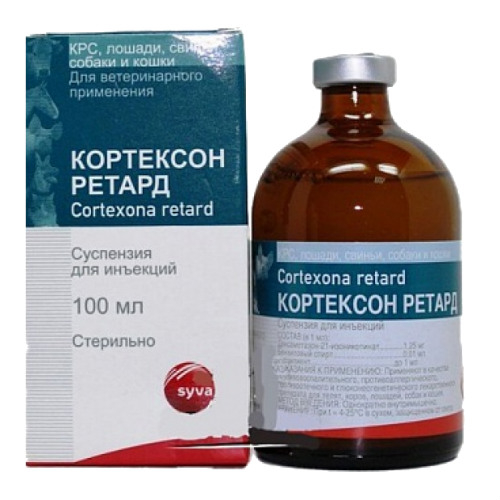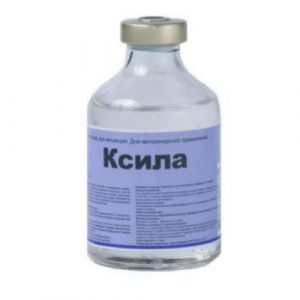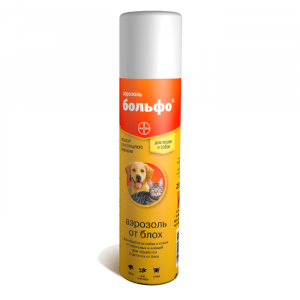Description
Pharmacological action
Pharmacotherapeutic group: hormonal drug.
Dexamethasone, which is part of the drug, is a glucocorticosteroid, methylated derivative of fluoroprednisolone has a pronounced and long-lasting anti-inflammatory, anti-allergic, desensitizing effect, has immunosuppressive activity.
The mechanism of action of the hormone is to block the release of inflammatory mediators by eosinophils, including prostaglandins, which potentiate the inflammatory process in stimulating the biosynthesis of lipocartins, which have decongestant activity in reducing the permeability of capillaries and the number of mast cells that produce hyaluronic acid.
The immunosuppressive effect is due to inhibition of the release of cytokines (interleukin – 1,2, gamma-interferon) from lymphocytes and macrophages, inhibition of proliferation of lymphoid tissue and cellular immunity, and a violation of the kinetics of T-lymphocytes.
The main effect of dexamethasone on metabolism is associated with protein catabolism, increased gluconeogenesis in the liver, and decreased glucose utilization by peripheral tissues.
After intramuscular administration, the maximum plasma concentration of dexamethasone is detected after 60 minutes. The therapeutic concentration in the blood serum lasts 30-96 hours, depending on the type of animal. The bioavailability of dexamethasone with intramuscular injection of the drug is 100%.
The biotransformation of dexamethasone occurs in the liver and partially in the fibroblasts involved in the metabolism. As a result, 17-hydroxycorticoids that do not have biological activity are formed, as well as 17-ketosteroids with androgenic effect. Metabolites bind to glucuronic acid and sulfates in the liver and kidneys, where they turn into water-soluble sulfuric esters and glucuronides, which are rapidly excreted in urine (75%) and bile (25%).
Cortexon retard in terms of exposure to the body belongs to moderately hazardous substances (hazard class 3 according to GOST 12.1.007).
Indications
Cortexon retard is prescribed to cattle, sports and work horses, pigs, dogs and cats as anti-inflammatory, anti-allergic, anti-edematous and gluconeogenetic drugs in the treatment of post-traumatic edema, arthritis, tenosynovitis, as well as acute mastitis and ketosis of cattle, metritis-mastitis-agalactic dermatitis syndrome, sows and eczema in dogs and cats.
Contraindications
Contraindication to the use of the drug is the individual hypersensitivity of the animal to one of the components of the drug (including a history).
Cortexon retard is not recommended for use in animals with diabetes mellitus with hepatic, renal or heart failure, gastric and duodenal ulcer with bone fractures and osteoporosis with degenerative diseases of the eye and / or corneal ulcer with hyperadrenocorticalism.
Animals with bacterial, fungal and / or viral diseases, Cortexon retard should be used using etiotropic and pathogenetic therapy. If necessary, the use of the drug in such cases, the treatment of animals should be carried out under the strict supervision of a veterinarian.
Cortexon retard is forbidden to use for horses whose meat and milk are used for food purposes.
Composition
Cortexon retard in 1 ml contains dexamethasone-21-isonic , 25 mg, excipients: sodium chloride, polysorbate 80, gasoline alcohol and water for injection.
Dosage and administration of
The drug is administered to animals once intramuscularly in the following doses:
to cattle, horses, pigs – 1 ml per 62.5 kg of animal weight
to calves, foals, piglets – 1 ml per 40 kg of animal weight to
dogs – 0.5 ml per 8 kg of animal weight
to cats – 0.25 ml per 2 kg of animal weight.
If necessary, repeat the injection in the same dose after 10-14 days. Before use, the drug bottle should be shaken thoroughly.
If you overdose in horses, drowsiness may occur.
Peculiarities of the action during the first use of the drug or during its withdrawal were not detected.
Cortexon Retard should not be used in pregnant animals in the last third of pregnancy. The use of corticosteroids in lactating cows can cause a short-term decrease in milk productivity. The use of the drug to stimulate labor can cause a decrease in the viability of the fetus, as well as increase the frequency of retention of the placenta.
A drug is usually used once.
Side effects
Side effects and complications when using Cortexon retard in accordance with the instructions, as a rule, are not observed. With prolonged use, the manifestation of Cushing’s syndrome is possible, which causes redistribution of fat in the body, muscle weakness, weight loss and osteoporosis. The appearance of polyuria, polydipsia and polyphagy is possible. In case of allergic reactions, the use of the drug is stopped and, if necessary, desensitizing therapy is prescribed.
Storage conditions
Store in the manufacturer s sealed packaging, in a dry place protected from direct sunlight, separately from food and feed, at a temperature of 4 ° C to 25 ° C. Cortexon Retard should be stored out of the reach of children.
Expiration of the drug, subject to storage conditions in unopened packaging – 3 years from the date of production, after the first opening of the bottle – 28 days. With prolonged storage, delamination of the aqueous suspension is possible, which disappears with shaking.
The use of the drug after the expiration date is prohibited.
Dispose of unused drug as required by law.
active substance
Dexamethasone




